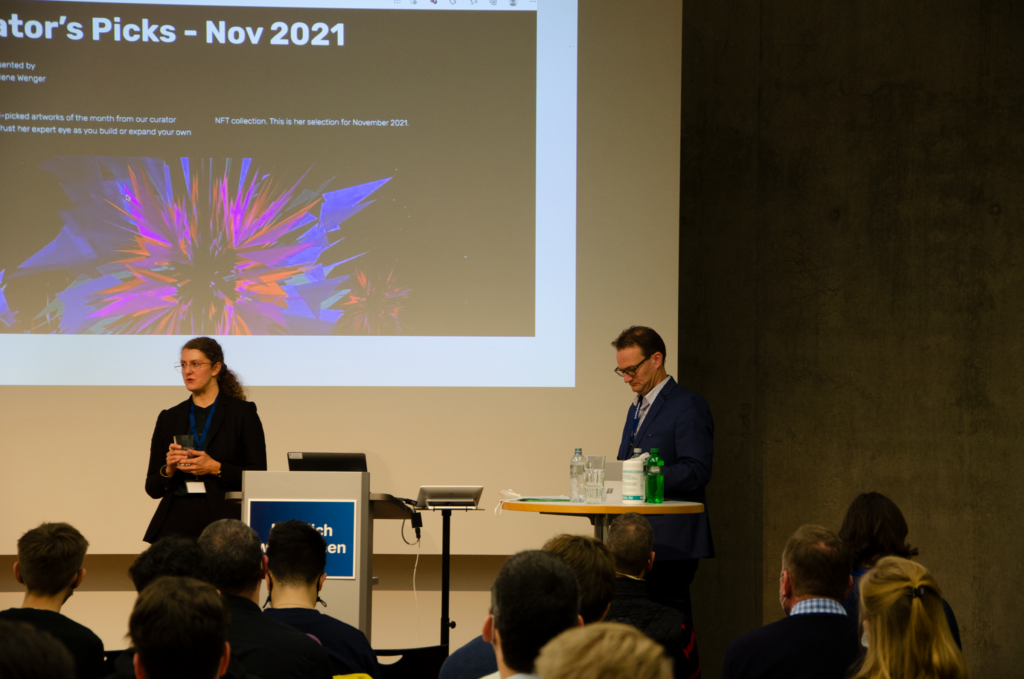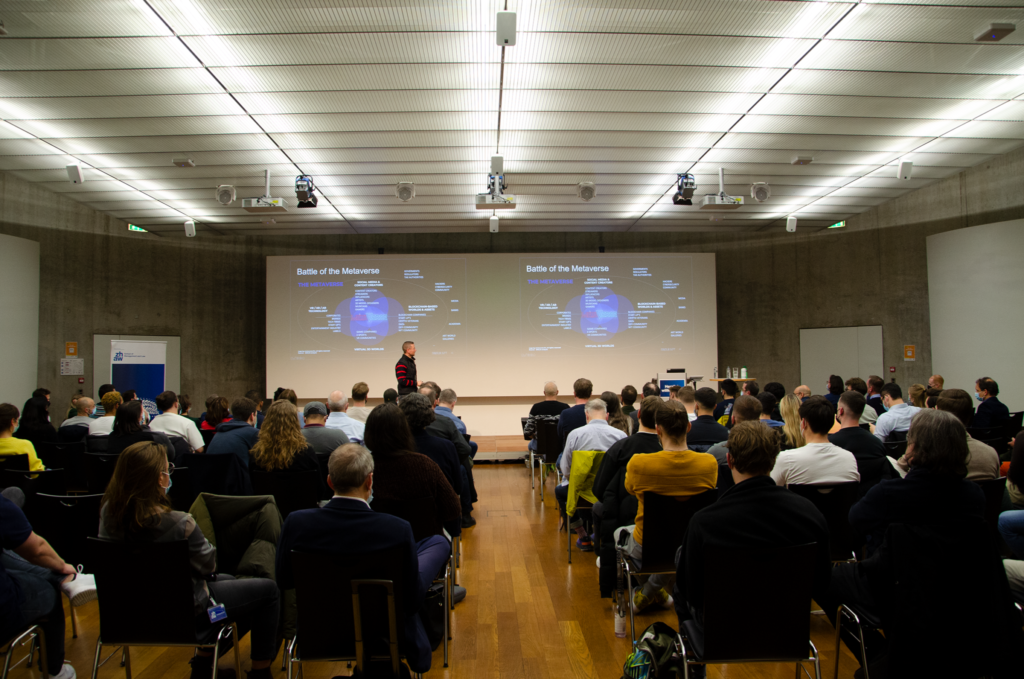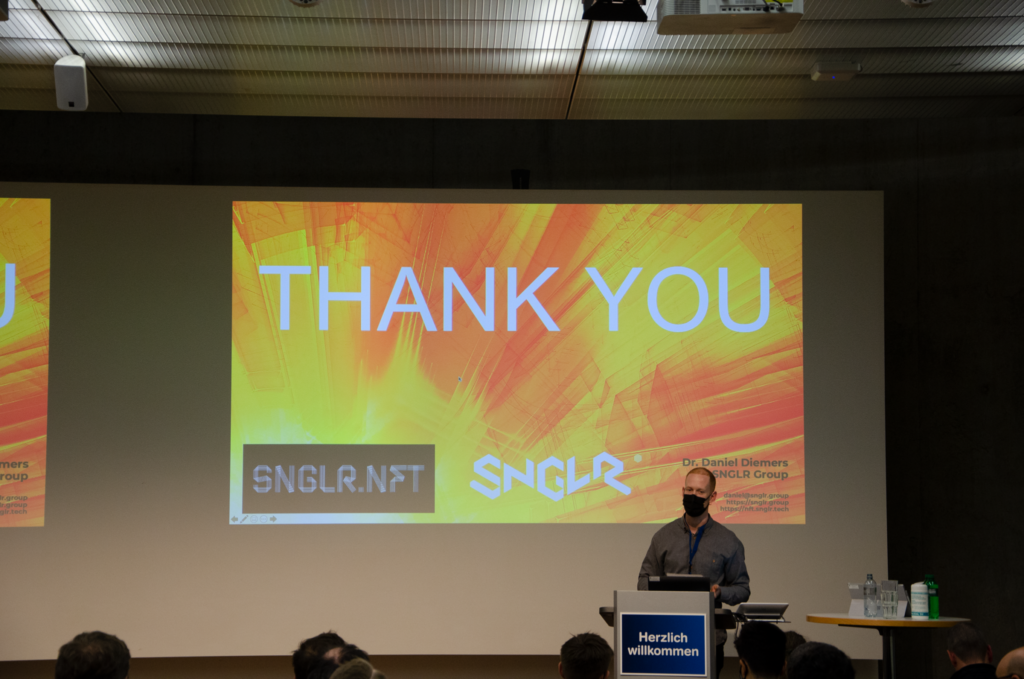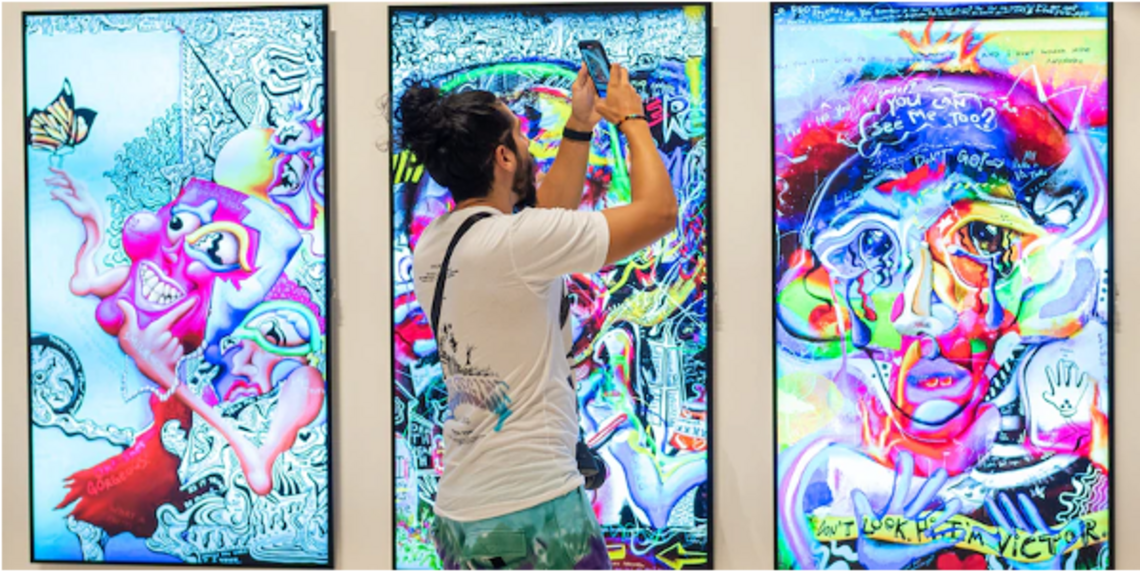Yesterday, we hosted the NFT Symposium in Winterthur with more than 100 participants.
NFTs – non-fungible tokens – have become a major topic not only in the art space, but also beyond. This technological development based on blockchain technology allows to create ownership of digital assets. The most famous NFT art piece (Everydays from Beeple) has been sold for 69 million USD. Also, the Swiss post has issued so-called crypto-stamps. NFTs has even been given the top spot on ArtReview‘s annual Art Power 100 list. Enough reasons to take a closer look at this novel phenomenon.

The event started with a speech from an art historian, Dr. Yvonne Schweizer from the University of Berne. She showed that it is always worthwhile to look back to see what has happened in the past: The idea of digital scarcity is by no means new. Previous artists have already found ways to create digital ownerships, e.g., with contracts. Interestingly, Yvonne also showed that currently there is a split between the traditional art market (mainly frequented by the “boomer” generation) and the crypto market (Generation Z).

After this enlightening talk, Dr. Daniel Diemers allowed us to take a glance into the future. NFTs are not merely important in the art market, they are the building blocks for the metaverse (as for example envisioned by the company Meta, previously Facebook). They allow for the creation of new digital worlds in which users trade and interacts with each other. Already today, such digital worlds (Decentraland, Sandbox) are worth billions. In the metaverse, we will see the convergence of several different technologies (AI, VR, AR, Blockchain) and all of this is guided by NFTs.
After the symposium, we exchanged ideas and our astonishment on this new technology during an apéro.

